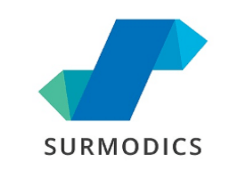The final results from a phase 2 randomised trial, published online in the Journal of Clinical Oncology on 1 February, find no benefit from using doxorubicin-eluting beads (LC Bead, BTG) over embolic microspheres that do not elute a drug (Bead Block, BTG).
The randomised trial set out to compare the outcome of bland embolization of hepatocellular carcinoma using microspheres alone with chemoembolization using doxorubicin-eluting microspheres. The results show no difference in outcomes between the two approaches in patients with unresectable hepatocellular carcinoma.
While transarterial chemoembolization is an accepted therapy for hepatocellular carcinoma, the authors write, no randomised trial has demonstrated the superiority of chemoembolization compared with embolization. The role of chemotherapy (in the embolization process) remains unclear, they maintain.
Karen T Brown, Department of Radiology, Memorial Sloan Kettering Cancer Center, New York, USA, and colleagues concluded from the trial: “There was no apparent difference between the treatment arms. These results challenge the use of doxorubicin-eluting beads for chemoembolization of hepatocellular carcinoma.”
Between December 2007 and April 2012, Brown and colleagues randomly assigned 101 patients either receive embolization with microspheres alone (BeadBlock group, n=51) or embolization with beads loaded with 150mg doxorubicin (LC Bead group, n=50). Twenty two per cent of patients were Barcelona Clinic Liver Cancer stage A and 78% were stage B or C patients. The median age of patients was 67 years and 77% were male.
As reported in the Journal of Clinical Oncology, the primary endpoint was response according to RECIST 1.0 (Response Evaluation Criteria in Solid Tumors) using multiphase computed tomography, two to three weeks post-treatment and then at quarterly intervals, with the reviewer blinded to treatment allocation.
The secondary objectives included safety and tolerability, time to progression, progression-free survival, and overall survival.
Adverse events occurred with similar frequency in both groups: 38% in the BeadBlock group and 40% in the LC Bead Group; p=0.48). There was no difference in RECIST response between the two groups with 5.9% showing response in the BeadBlock group vs. 6% in the LC Bead group. The median progression free survival was 6.2 months in the BeadBlock group vs. 2.8 months in the LC Bead group (p=0.11). The overall survival was 19.6 months in the BeadBlock group as compared to 20.8 months in the LC Bead Group (p=0.64).












